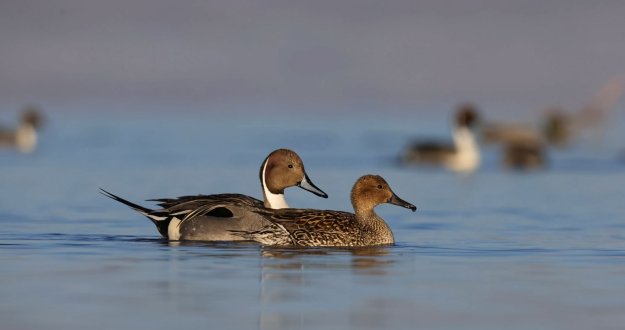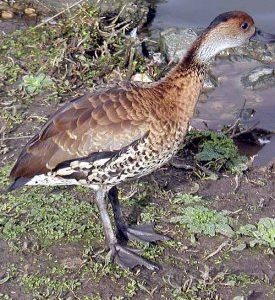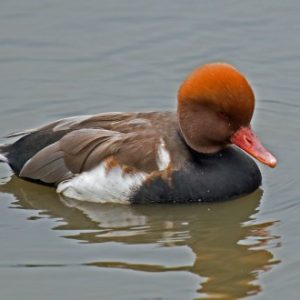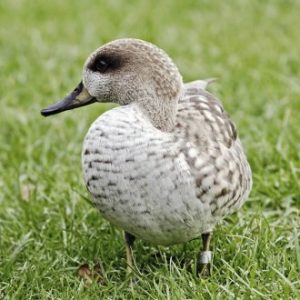Blue Northern Pintail Ducks
Anas acuta
The Blue Northern Pintail Duck is perhaps one of the most elegant and graceful looking of all waterfowl. They are a perfect, aesthetic balance, with curving lines of perfectly matched shades of browns and grays.
The females are a lavender-beige color with a gray bill. The males look very similar to the females when in eclipse, but when the males are in their breeding plumage, they are gorgeous, with showy, but subtle charm. They have a dark chocolate head with a white curving strip that accentuates the long and graceful neck, and the rest of the body is made up of graceful lines of bluish grays. The bill on the male Blue Northern Pintail is also bluish gray.
Range: The range of the Blue Northern Pintail Duck is very widespread, extending across most of North America.
Habitat: Blue Northern Pintails inhabit shallow waters such as ponds, swamps, and marshes. Although they will forage on land, they spend the majority of their time dabbling in muddy, shallow waters.
Status in the Wild: The population of Blue Northern Pintail Duck is very stable in the U.S., and they are classified as being of Least Concern in Conservation Status.
Status in Aviculture: Blue Northern Pintail Ducks are very popular aviary birds and are fine additions to any waterfowl collection as they get along with other waterfowl and are hardy and easy to care for.
Breeding: Blue Northern Pintails are monogamous and form strong pair bonds. Although they are capable of breeding in their first year, they usually don’t breed until they are two years old. They make use of nest boxes, and if natural cover can be provided, that would be ideal for them. The breeding season is usually in May or June. There are usually 6-10 blueish gray eggs in a clutch and incubation takes 22-25 days.
Lifespan: In the wild, Blue Northern Pintails usually have a lifespan of about 10 years, in captivity, they have been known to live up to 20 years.
Size: Blue Northern Pintail Ducks ducks are quite sizeable ducks – adults weigh 2-2.5 pounds and are between 21-29 inches in length. Wingspans range between 29-35 inches.
Housing Requirements: Blue Northern Pintail Ducks are dabbling ducks and require a body of water for their foraging. They spend most of their time in the water. They do fly as well though, so an enclosure of some sort or aviary may be required. Of course, be sure that the enclosure is safe from predators as well.
Diet: Providing your Blue Northern Pintail Ducks with access to dabbling water would be ideal. But even with ample foraging, they will require supplemental feed in winter in most areas as wild food will become scarce. Blue Northern Pintail Ducks do well on a high-quality waterfowl diet or a game bird diet.
Miscellaneous Notes: With their long elegant necks, Blue Northern Pintails can upend on the water and reach down over 12 inches to grab food from the mucky bottoms of ponds and shorelines.




